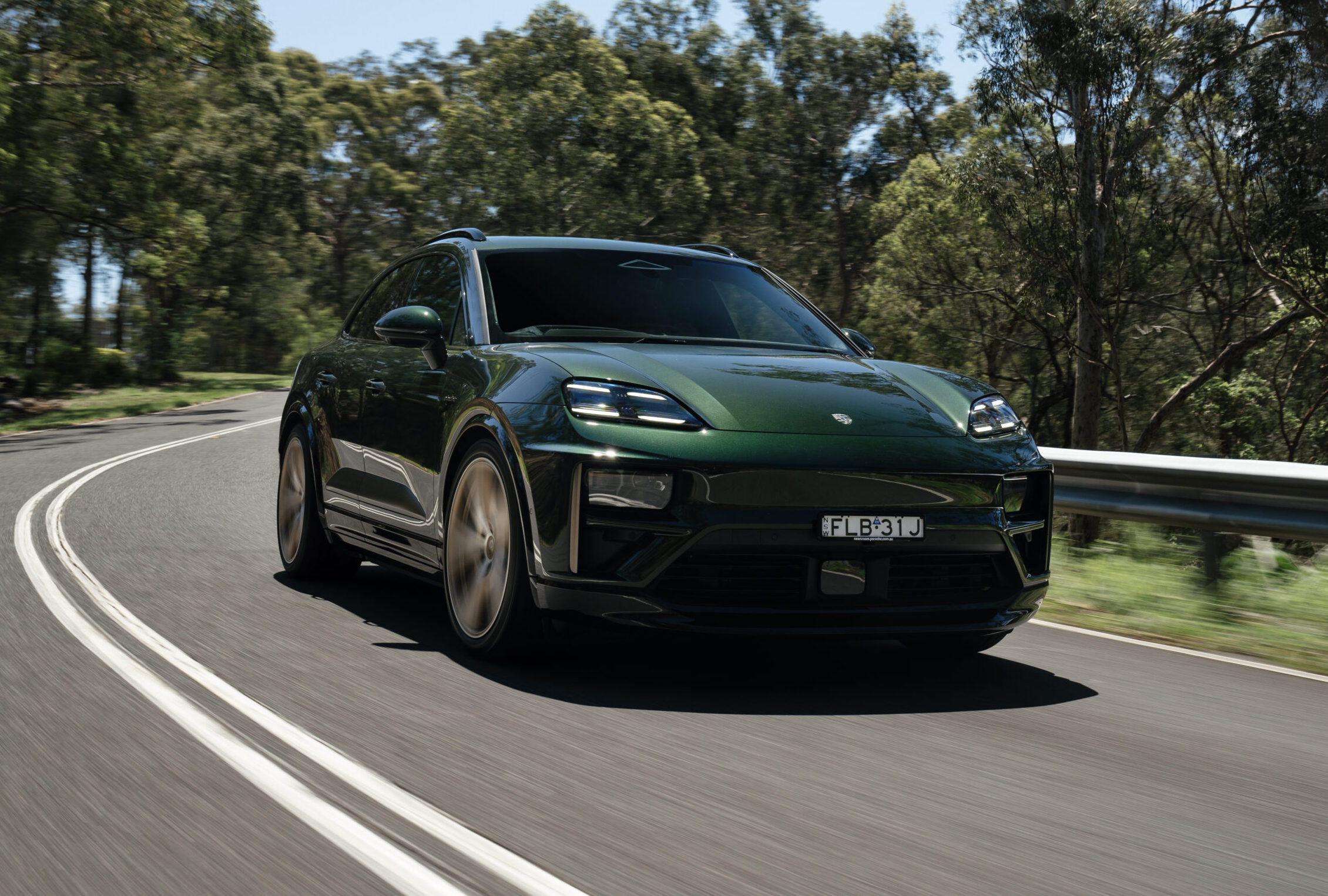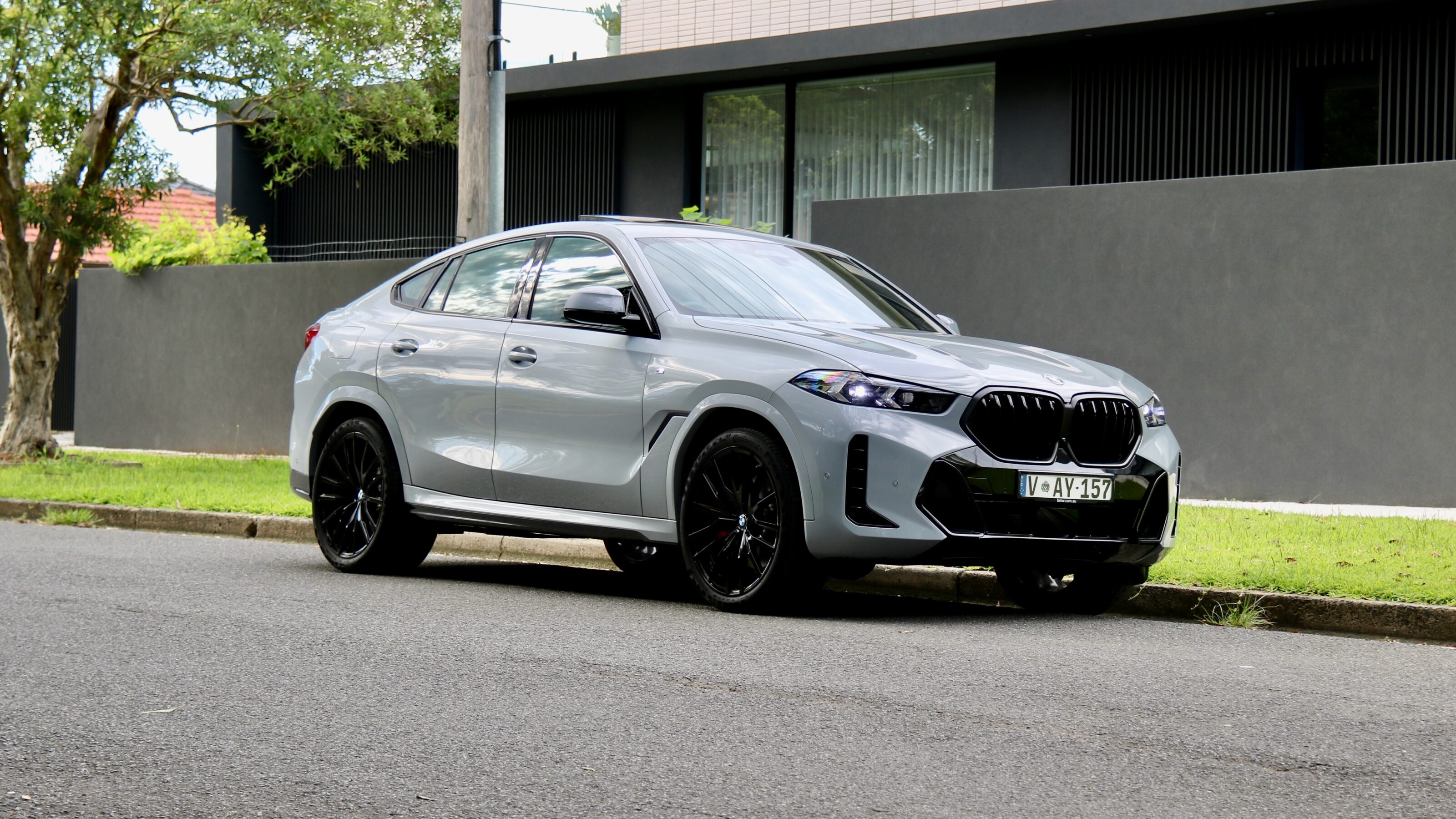Score breakdown
Things we like
- As luxurious as cars get
- Sublime ride quality
- Amazingly tight turning circle
- V8 engine note
Not so much
- Fuel consumption
- Rear-seat space nothing special
- No hybridisation at all
Imagine if every duke and duchess in England got together and opened a tender process for a vehicle that suited their every need.
It would be big, statement-making, opulent – something to shuttle down narrow, cobbled country lanes, or to the opera at night. Something in which to reach the roadless, far-flung corners of a sprawling estate – with confidence of getting back to the manor, and with clean boots, no matter what off-road treachery you faced.
One vehicle that would fit the brief perfectly would be this: the new Range Rover P530 Autobiography.
The original luxury SUV, the inimitable Range Rover continues to do luxury in its own, almost prescriptive way. But it’s a prescription you’d happily accept, as many have tried to copy it – without quite succeeding. If there was a recipe for making a Range Rover, it would be a closely guarded industry secret.
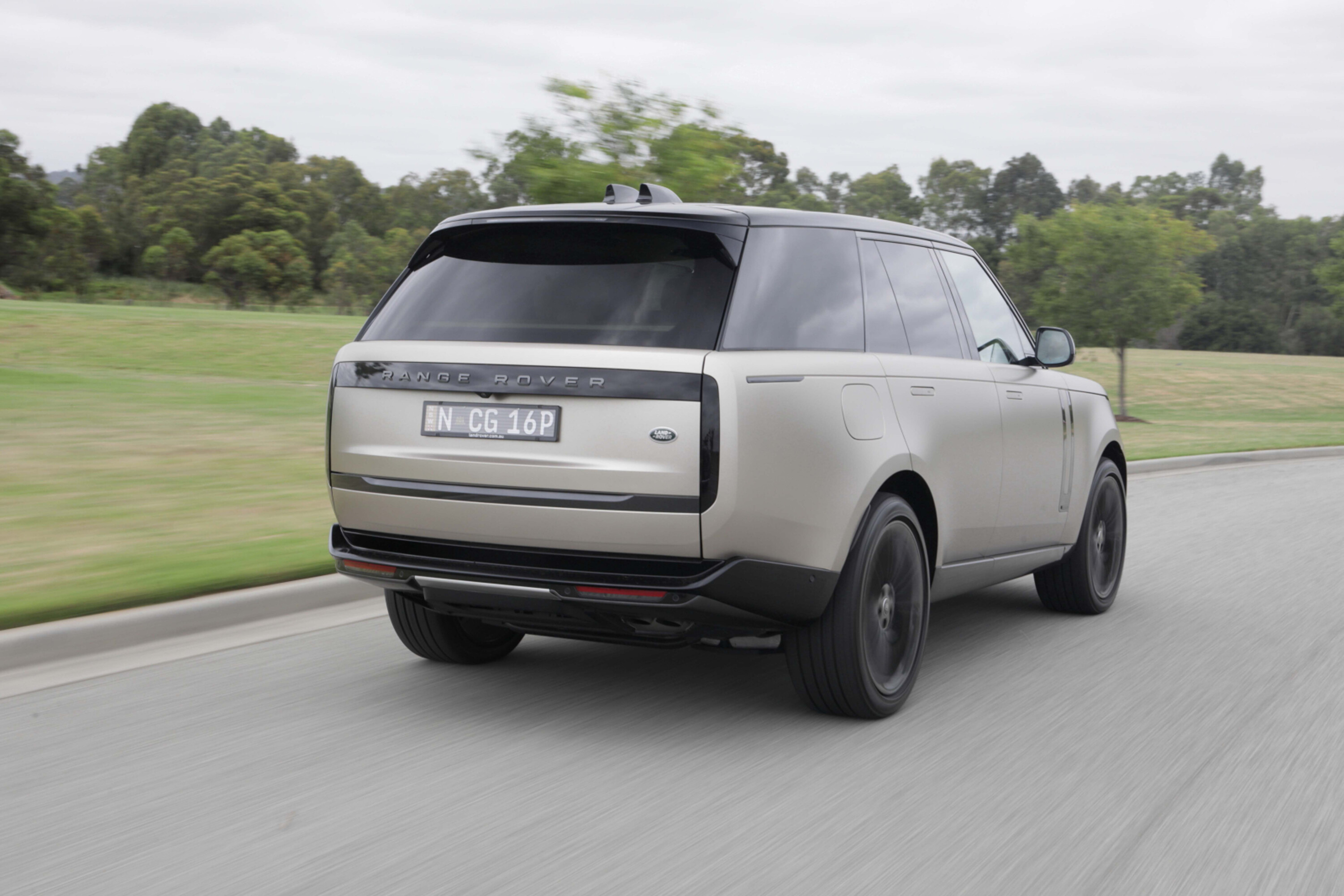
Now up to its fifth generation, the almost sculpted-looking Range Rover was designed by Gerry McGovern, who wanted to evolve the styling rather than reinvent it. Made in Solihull, UK, the L460-codenamed Range Rover is built on the new, electric-ready Modular Longitudinal Architecture (MLA) that was originally set to underpin future Land Rover and Jaguar models – until it was painfully canned in 2021 at an eye-watering cost of $2 billion.
Jaguar Land Rover (JLR) executives realised it wouldn’t be enough to meet future emissions regulations. Instead, it will underpin just the new Range Rover and Range Rover Sport – a lot of R&D money to amortise over just two model lines.
In Australia, there are currently 16 variants of the new Range Rover – and explaining the range would merit an entire article on its own. There are eight derivatives utilising four engine configurations – a 3.0-litre turbocharged inline-six available as a petrol, diesel or plug-in hybrid.
Then there’s the 4.4-litre twin-turbo petrol V8. The six-cylinder is a JLR design while the V8 is sourced from BMW and an all-electric Range Rover is due in 2024. Our P530 First Edition we’re driving today is powered, delightfully if not particularly sustainably, by the V8.
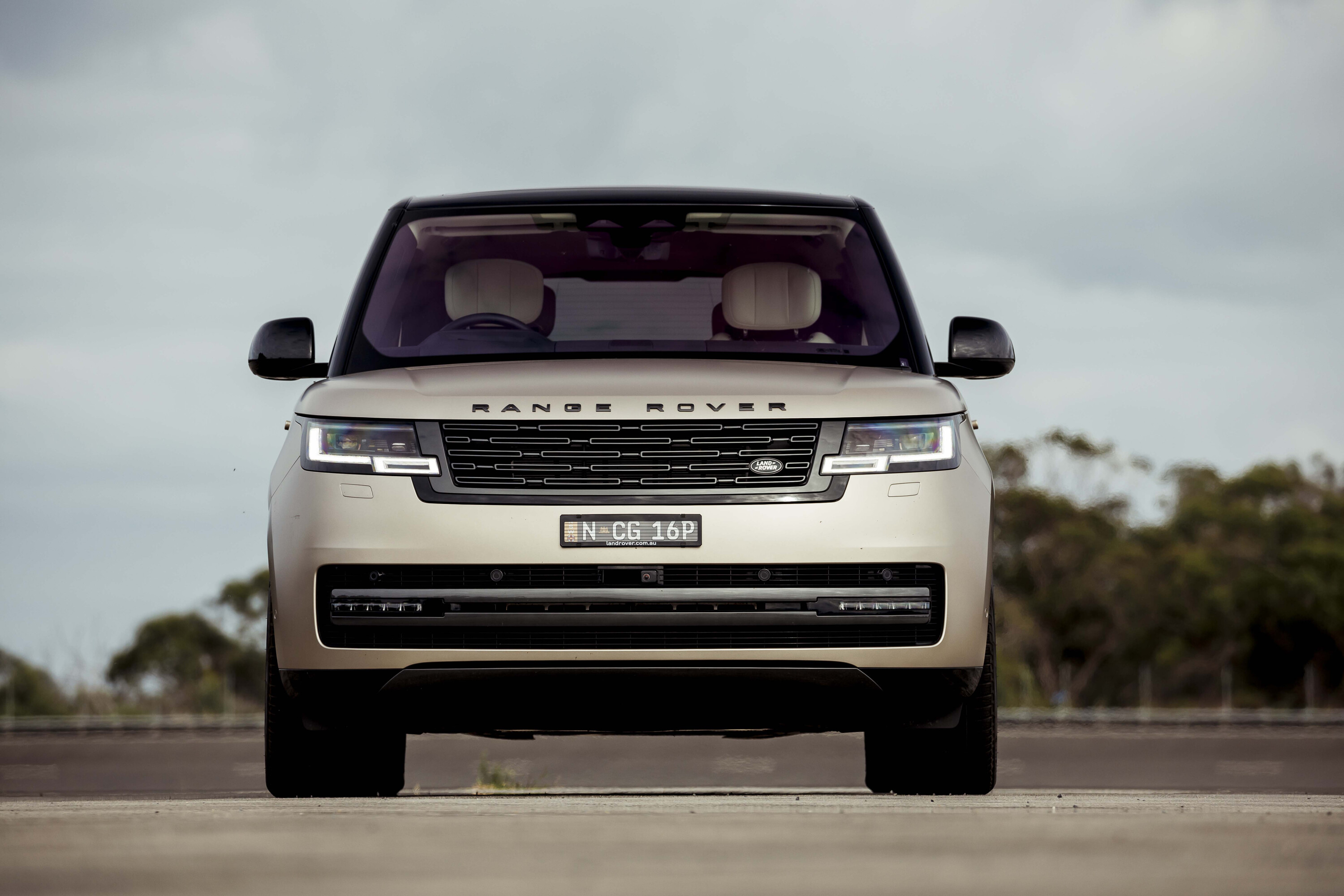
JUMP AHEAD
- How much is it, and what do you get?
- How do rivals compare on value?
- Interior comfort, space and storage
- What is it like to drive?
- How much fuel does it use?
- How safe is it?
- Warranty and running costs
- VERDICT
- Specifications
How much is it, and what do you get?
As you’d hope for a car priced at $321,875 before on-road costs, the list of standard features is exhaustive. Basically, it comes with everything you could ever hope for on a modern vehicle, only excluding a handful of very picky want-to-haves.
Mechanically, you get that 4.4-litre twin-turbo V8 belting out 390kW, mated to an eight-speed torque converter auto. There’s an advanced all-wheel drive system, one of the best at going off-road of any vehicle. You get air suspension, all-wheel steering and, inside, oodles of interior space and more leather than a Berlin nightclub.
There’s also plenty of tech and gadgets – if you’re into that stuff – such that any user manual would be thicker than the Yellow Pages (circa 1995).
For an additional $15,347 over the ‘standard’ Autobiography, the First Edition gets you $15,170 worth of options. The remaining $177, we are left to guess, is so you can stir up your Autobiography-driving mate by telling them theirs must be the Second Edition.
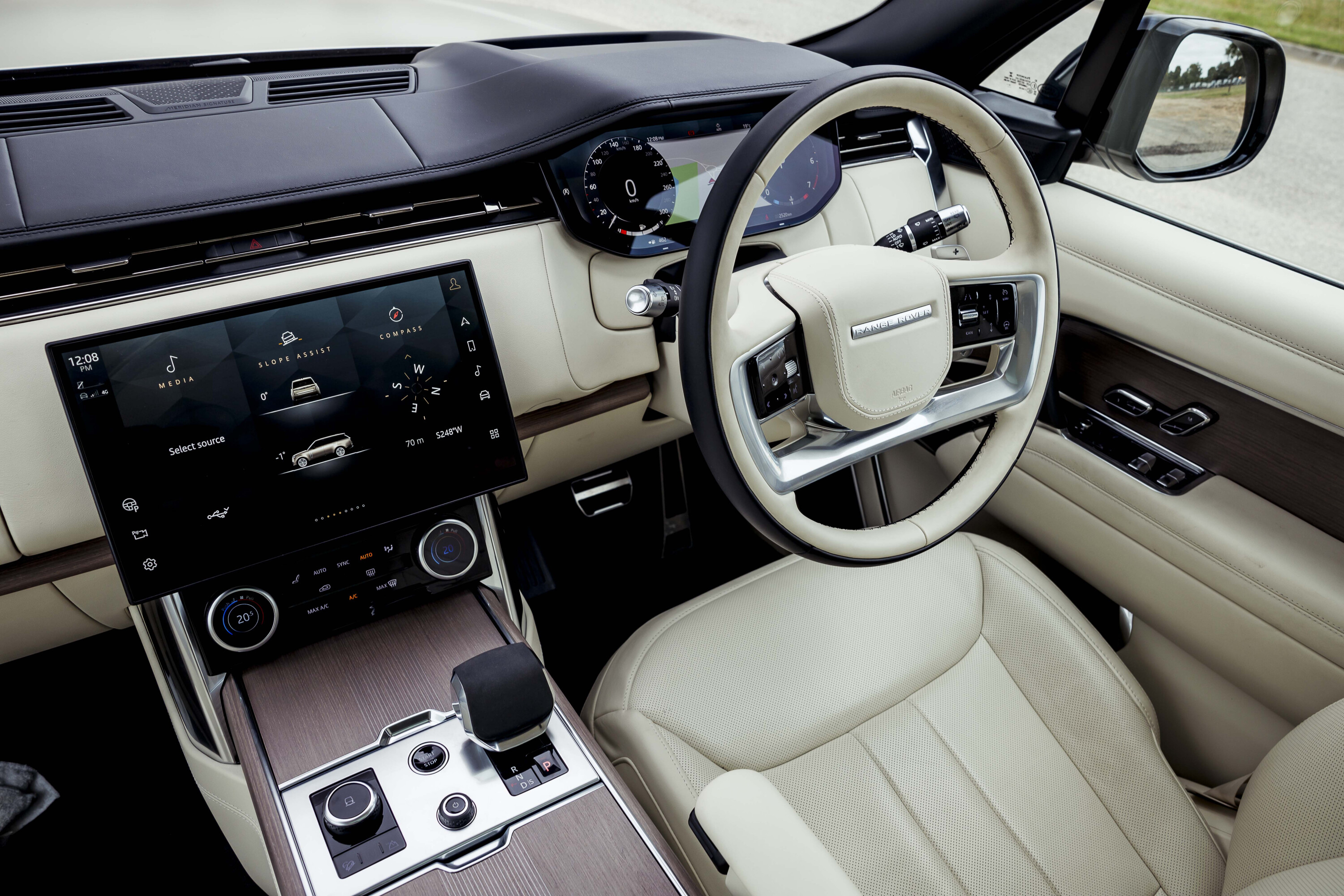
The First Edition gets some unique things, like a Natural Ecru Walnut veneer with inlay and unique First Edition script. There’s also illuminated metal tread plates that read “First Edition”. Unfortunately, the Sunset Gold satin finish of our test car, while only available on First Edition, is not standard. You need to pony up $17,000 for that.
We’d actually recommend seeing this in the metal before purchasing, too, as the matte finish emphasises the somewhat contourless, flat surfaces of the Range Rover, especially down the side, giving it a bit of a featureless, slab-like vibe from some angles. The exterior contours and lines are deliberately minimal, and a glossy finish would have them stand out more, giving the body a bit more shape. Our two cents, anyway.
Two premium metallic paint finishes – usually carrying a $2220 premium on the Autobiography – are also offered as no-cost options on First Edition: Batumi Gold or Charente Grey. So if you spec your First Edition in one of those, the $15,347 price premium over a regular Autobiography includes $15,170 of what would otherwise be options.
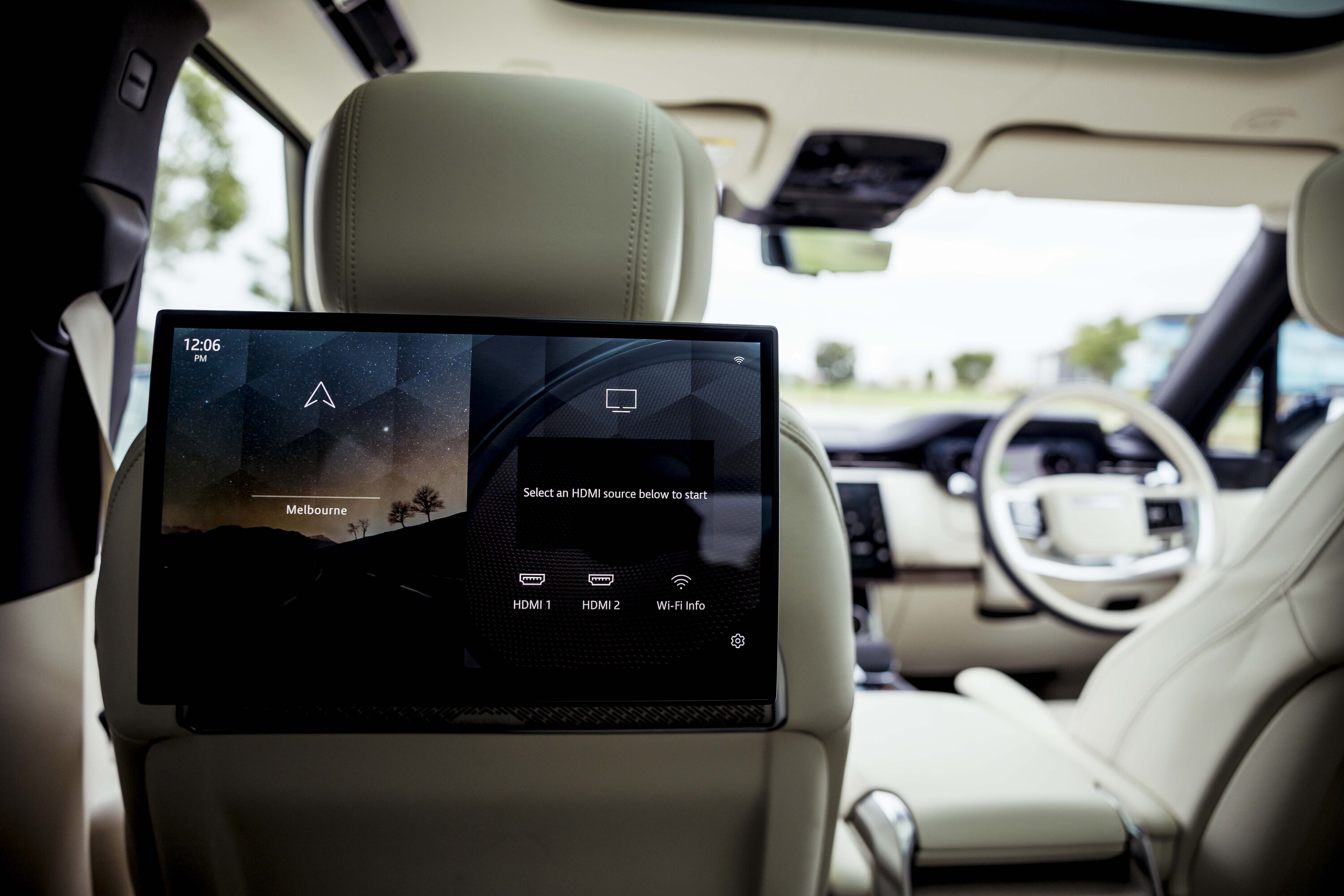
2023 Range Rover P530 Autobiography First Edition features (over standard P530 Autobiography)
| 2023 Range Rover P530 Autobiography First Edition features | |
|---|---|
| Privacy glass | Domestic 240v plug socket in rear seats |
| 23-inch wheels (in a unique design) | Batumi Gold or Charente Grey premium metallic paint |
| Front centre console refrigerated compartment | Natural Ecru Walnut veneer with inlay and First Edition script or Natural Black Birch veneer with inlay and First Edition script (not available on other models) |
| Tailgate Event Suite (includes the Versatile Loadspace Floor, Integrated Cup Holders, | Illuminated metal treadplates with First Edition script (not available on other models) |
| Tailgate Lighting and Tailgate Speakers) | Availability of Sunset Gold in Satin Finish u2013 Ultra Metallic Paint ($17,000 option not available on other models) |
| 11.4-inch Rear Seat Entertainment | The P530 Autobiography First Edition comes with a full-size 23-inch spare wheel. |
How do rivals compare on value?
Range Rovers are bought with the heart, but if that pesky head keeps wanting a seat at the table, you can get a lot of the opulence of the Range Rover – and V8 performance – for a lot less.
The BMW X7 M60i xDrive has the same 4.4-litre twin-turbo V8 (390kW/750Nm) and silky smooth eight-speed auto, but is nearly 40 per cent less expensive at $197,900 before on-road costs. It comes on 22s as standard, with air suspension and the highest quality BMW Merino leather. The leftover $123,885 buys you a very good holiday and nobody is going to call a BMW X7 a horrible place to sit – even if the latest model has been clobbered with the ugly stick. Several hundred times.
Other German options include the Audi SQ7 at $163,400 – also powered by a twin-turbo V8, with 373kW/770Nm. Boasting a lot more power (but potentially reduced ride quality) there’s the 450kW/850Nm Mercedes-AMG GLS63 at $267,100. There’s also the 404kW/770Nm Porsche Cayenne Turbo at $263,300 (all before on-road costs). Each is a worthy alternative, if not quite as ‘special’ as a Rangie.
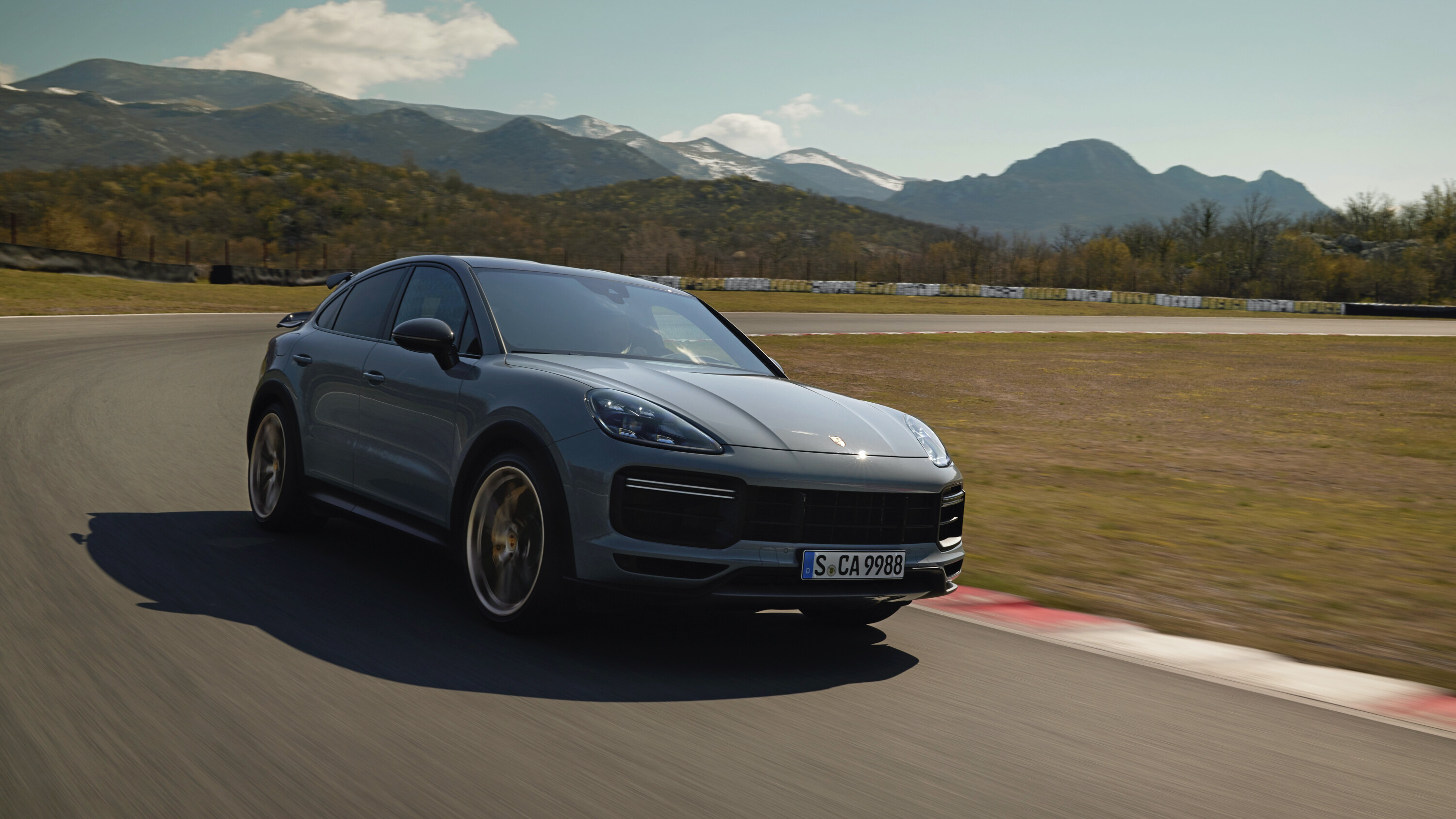
To get closer on interior leather quality – and badge prestige – there’s the 404kW/770Nm Bentley Bentayga V8 ($378,600) or the 410kW/730Nm Mercedes-Maybach GLS600 ($360,800). If you ask us, however, neither feels as eventful as the Range Rover.
An Aston Martin DBX might be the most spiritually close rival of all; also British, extravagantly leather-appointed interior, and powered by a thumping 405kW/700Nm twin-turbo AMG-sourced V8. It’ll set you back $357,000.
Interior comfort, space and storage
“Do you want the hot rock massage on level three, or five?” This is a question you might hear asked in the new Range Rover Autobiography. And “I’m feeling three today” is something you might answer.
From the outside, the Range Rover is massive, a giant brick of a thing at five metres long, two metres wide and almost two metres tall. Any vehicle that makes 23-inch wheels look like 20-inch wheels is a big one. The styling is very similar to the previous model, at least at the front, but with a dash more Range Rover Sport. The rear tapers to cool, thin LED tail-lights – although it must be said, the front and rear look like they were styled by entirely different teams.
Hit unlock on the keyfob and little electric motors whir as the flush door handles pop out. As you open the huge doors, a strong smell of leather invades your nostrils. Inside, the Range Rover has a delightful, almost charming hand-made ambience to its interior. Using the various interfaces, there’s often the sense that some minor function is not quite the best way of doing things, but you forgive it anyway.
Testament to the sound insulation, it’s very quiet inside. Getting into your peacefully quiet Range Rover from a busy city street would be a calming relief alone. The leather quality is very good.
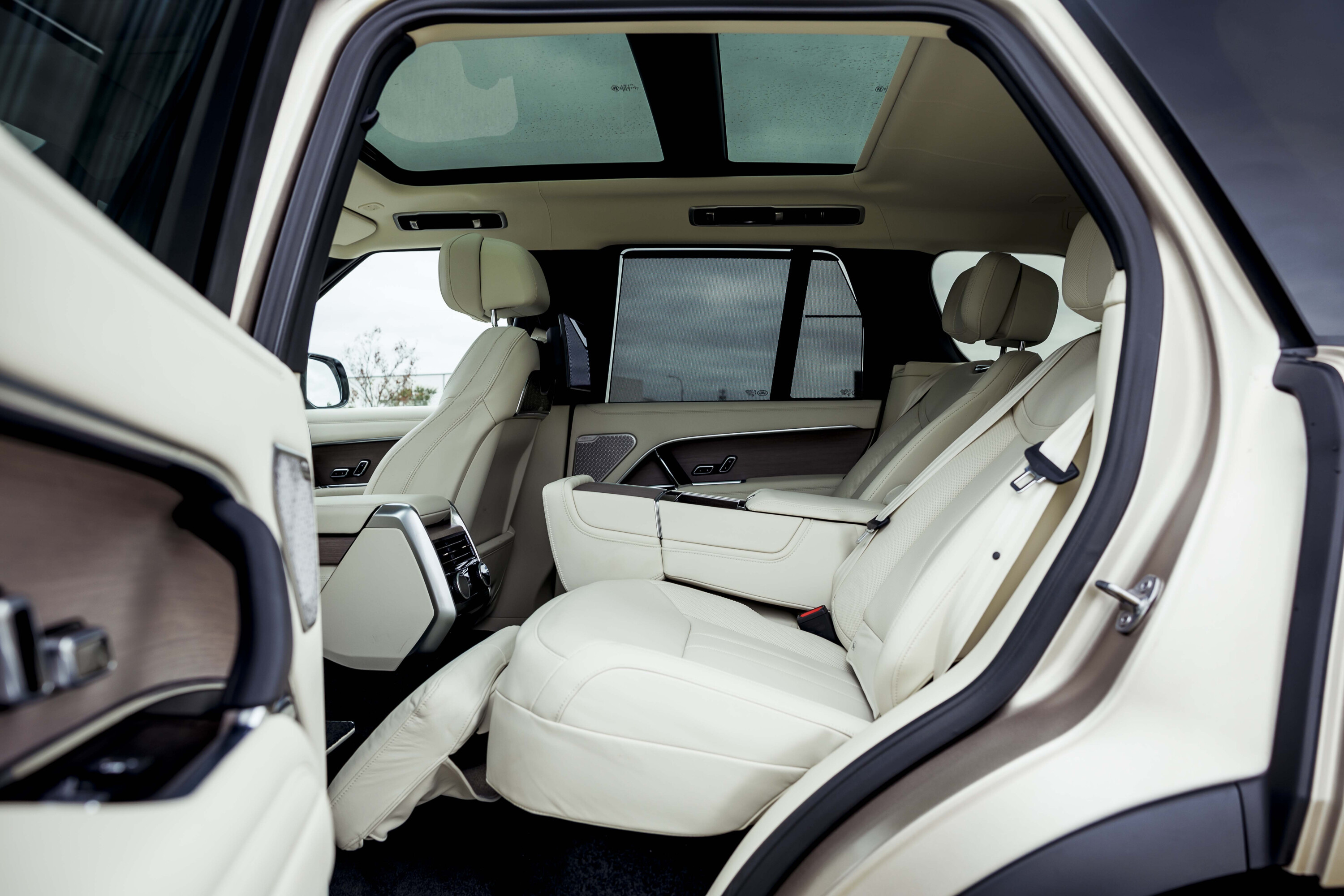
An awesome amount of computing power goes on in the new Range Rover – 69 individual ECUs run the entire show. Taking pride of place in the centre dash is a huge 13.1-inch touchscreen presenting the biggest, crispest and clearest Apple CarPlay we’ve ever seen. The screen itself is something of a fingerprint magnet and if the sun hits it the wrong way, it looks like an iPad that’s been handled by a toddler. You’ll want to keep a microfibre cloth nearby for regularly wiping it down.
Thank you, Land Rover, too, for keeping dials and hard buttons for the air-conditioning. Other brands are migrating these functions into touchscreens, which is a maddening trend.
Rear-seat space and packaging aren’t as great as we hoped for such a large vehicle – even with the 75mm longer wheelbase compared to a previous-generation short-wheelbase model. Back-seat passengers won’t feel cramped, but we wouldn’t say knee- and foot-room was mind-blowing. Get the 200mm-longer Long Wheelbase version if you plan to regularly sit in the back.
Our test car had the Chauffeur Mode rear seat which folds the front passenger seat forward and partially reclines the rear seat behind. Cool, but a slight novelty – it hardly reclines flat. We’re very difficult to please…
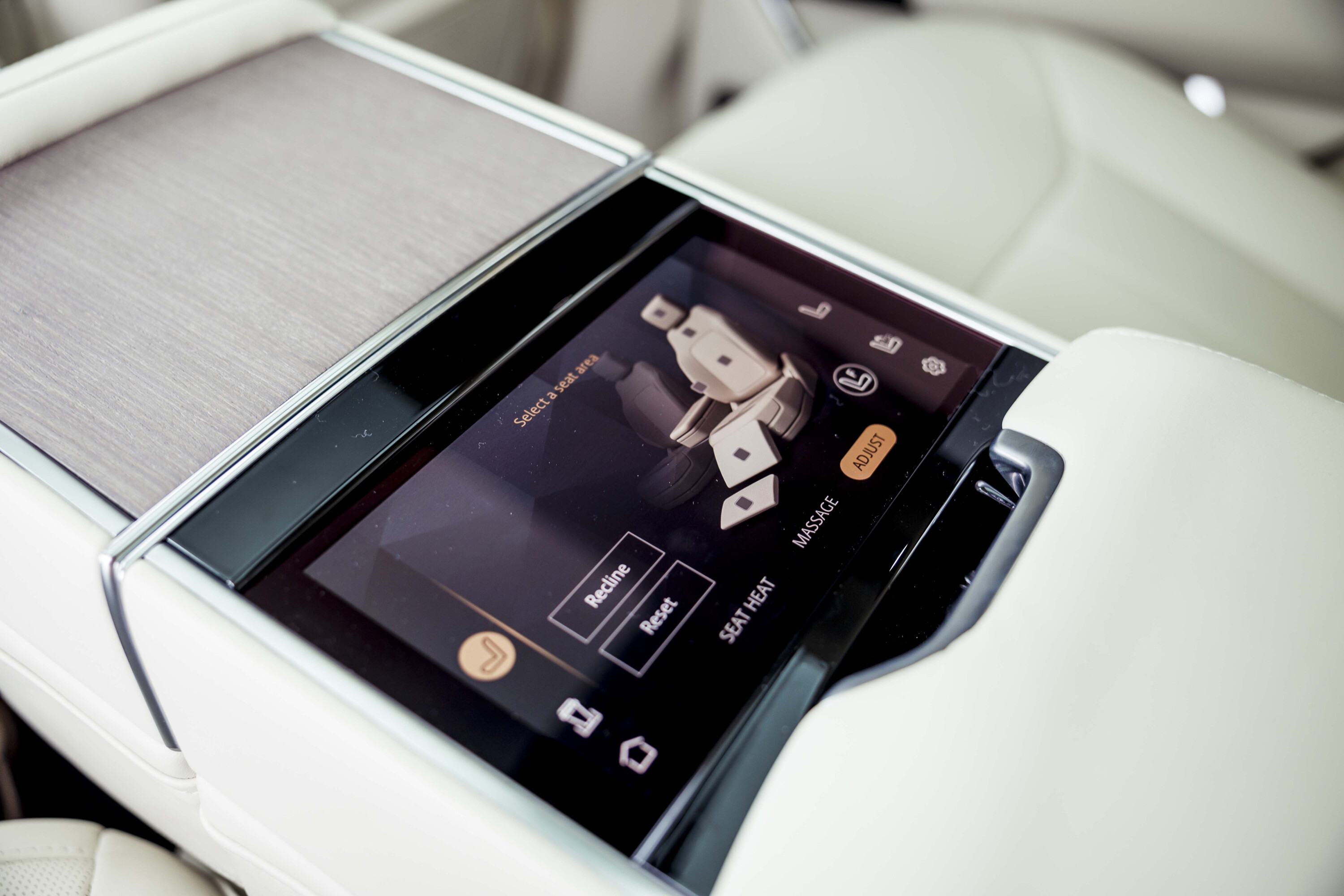
While we’re being petulantly picky, we have a few bones to pick. The Range Rover is so quiet on the move that the AC fan and front air vents are bothersomely loud – and not even on the highest fan speeds. Yeah, yeah, but it’s this kind of attention to detail that should separate a Range Rover from a BMW X7.
It could have been cool to experience an air-conditioning fragrance, too, like other luxury marques – but now we’re just sounding spoilt.
While we’re throwing punches the poor Range Rover’s way, its standard Meridian Signature Sound System – an $8180 option on the HSE – didn’t quite meet our expectations, set admittedly in the stratosphere after reading about its 34 speakers and 1600W of power. It’s great, but we remember the Bang & Olufsen 3D Advanced Sound System in top-tier Audis being more impressive.
We encountered a software gremlin in the system, too. While adjusting the front seat into Chauffeur Mode (from the driver’s seat, using the centre screen) it glitched out and wouldn’t cooperate. We had to stop and adjust the front passenger seat using the controls on the side of the seat itself.
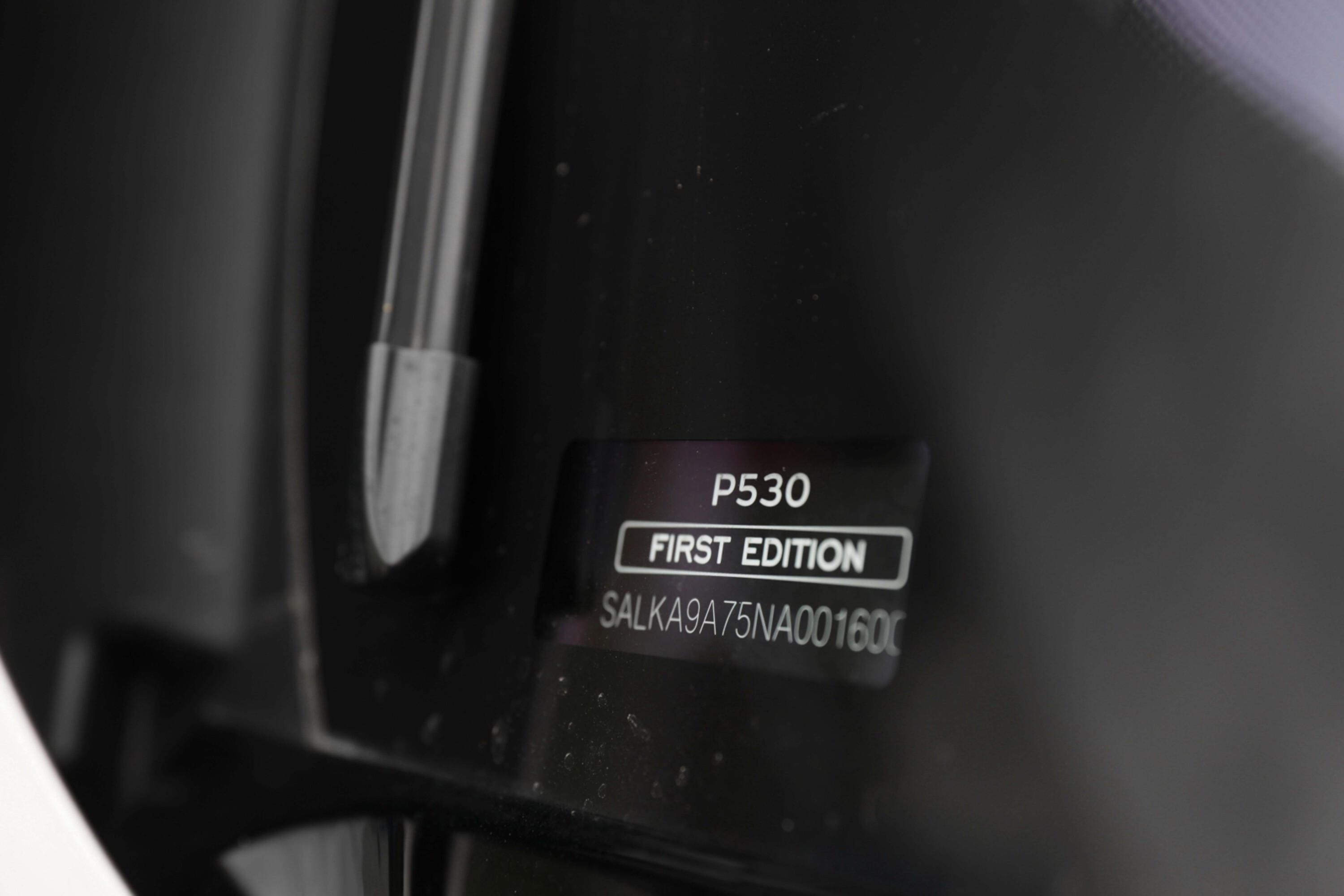
There’s also voice command, activated by a button on the steering wheel, which can fulfil basic commands such as turning on the seat heater or adjusting the AC temperature. It’s basic and a bit slow but does the job.
A pair of ISOFIX mounting points are provided on the outboard seats. There are window shades (controllable from the front), four rear air vents and 11.4-inch screens on the back of each front headrest where kids could watch anything (with provided, Range Rover branded Bluetooth headphones). What a (start to) life.
The boot features a two-part opening tailgate in classic Range Rover fashion. Both the upper and lower folding tailgate sections open and close electrically, which is lovely. The boot itself is acceptably large at 1050 litres. Curiously, there’s a little control panel in the boot that lets you adjust the rear air suspension height. There’s a funny choof sound as you lower the rear and the air suspension releases air, like a dog sneezing. It’s fun to play with, if nothing else…
Up to eight USB-C outlets are provided throughout the new Range Rover, as well as a 15W wireless charging pad in the front.
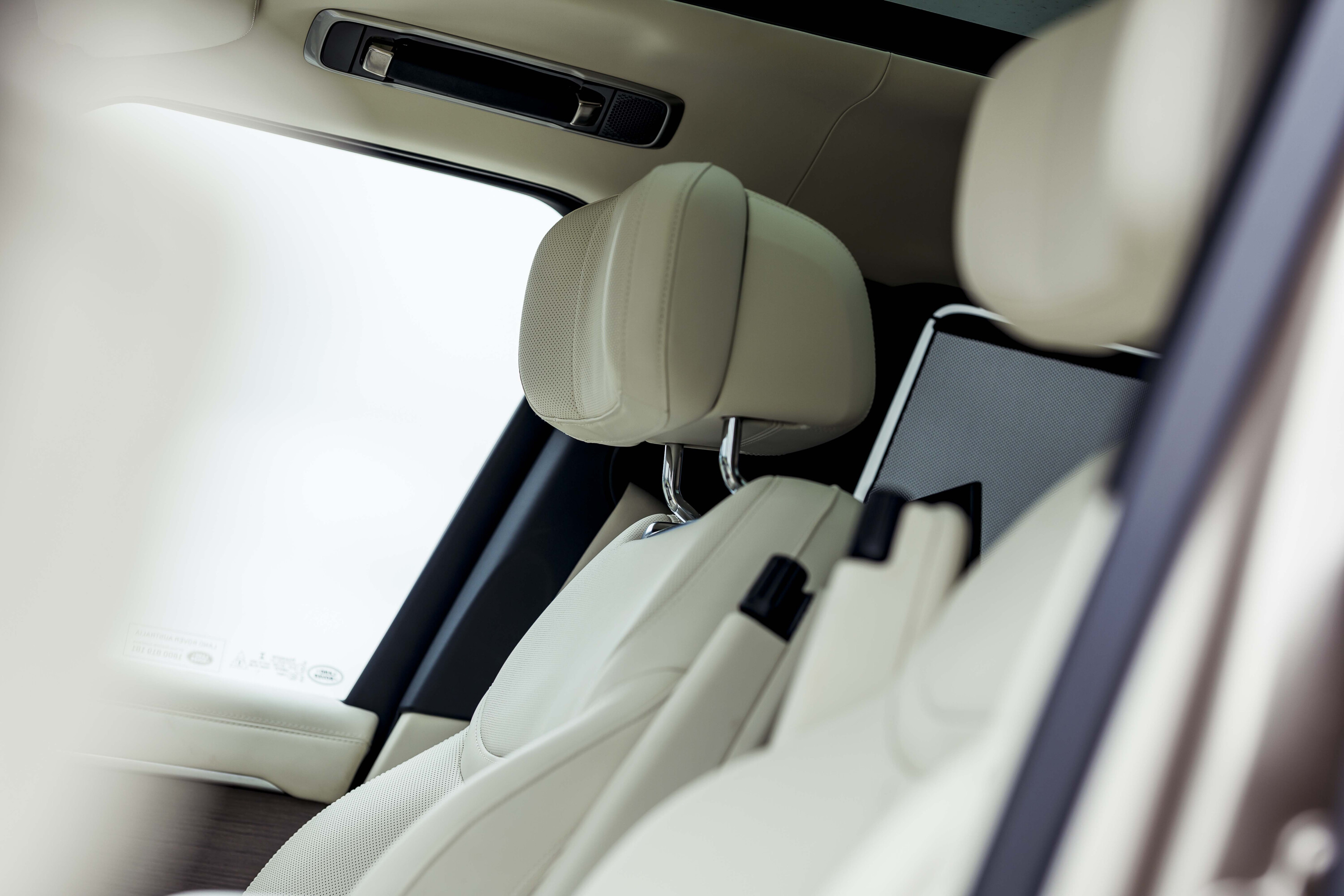
What is it like to drive?
| 2023 Range Rover P530 Autobiography First Edition quick specs | |
|---|---|
| Engine | 4395cc twin-turbo V8 petrol |
| Power | 390kW @ 5500-6000rpm |
| Torque | 750Nm @ 1800-4600rpm |
| Transmission | 8-speed automatic |
| Body | 5-door, 5-seat upper large SUV |
| Fuel consumption (tested) | 13.5L/100km |
| Boot space (5/2 seats) | 1050/2335L |
In a word: beautiful. For a vehicle its size, the Range Rover is effortless with light-feeling steering and lovely power. It’s quite wide and easily fills an Australian lane – narrow country roads with soft edges and without shoulders feel very narrow – and less confident drivers will never feel completely at ease with its width. But it perches you up nice and high with a commanding view of the road.
At urban speeds, it’s a delight – quiet and sumptuously comfortable. The ride quality is one of the Range Rover’s most enjoyable aspects, feeling expensive as if a team of engineers has fussed over it for a very long amount of time (and they probably have).
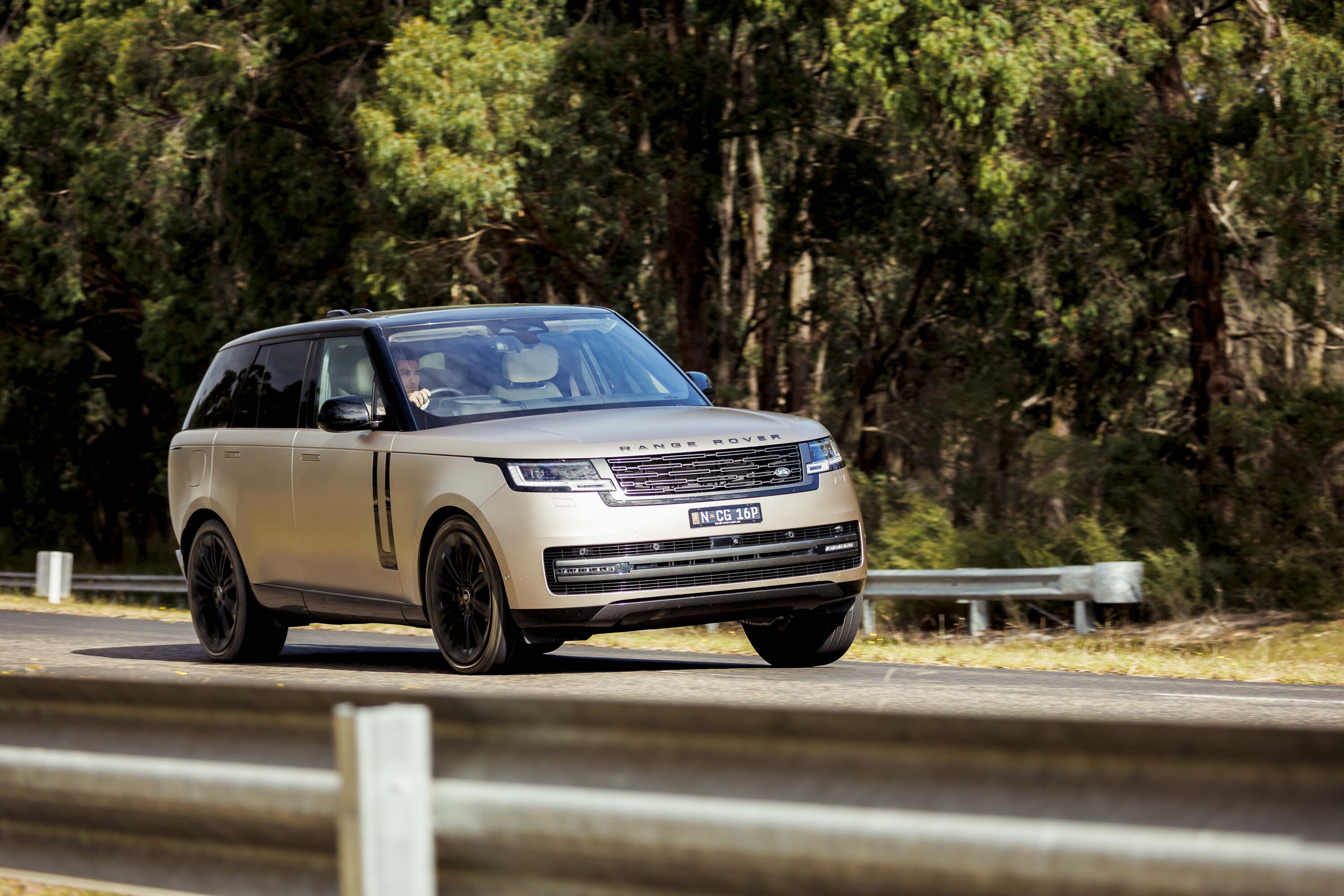
It makes Australian roads feel like European ones and indeed local governments would do well mandating that all new cars are fitted with Range Rover air suspension. It would certainly save a lot of cash on road maintenance. That Range Rover can achieve this level of ride comfort on 23-inch wheels is astonishing.
That said, over some bumps at about 100km/h there is a subtle but perceivable wobble through the entire superstructure of the car owing presumably to its size – and probably the fact there’s a giant hole in the roof for a window, affecting rigidity. Hardly a deal-breaker, but if we’re allowed to be perfectionists…
In the driver’s seat, there’s a head-up display and a 13.7-inch digital instrument cluster with plenty of adjustment and individualisation. For parking, there are more cameras than a maximum security prison and provide the kind of visibility that makes you look like an Olympic-level reverse parker. There’s also a digital rear-vision mirror which greatly improves rear visibility once you get used to it.
One underrated new feature is the rear-wheel steering, which helps neutralise the feeling of length. With some large cars, you might hesitate before a U-turn – especially if it means ending up in a frenzied three-point turn instead.
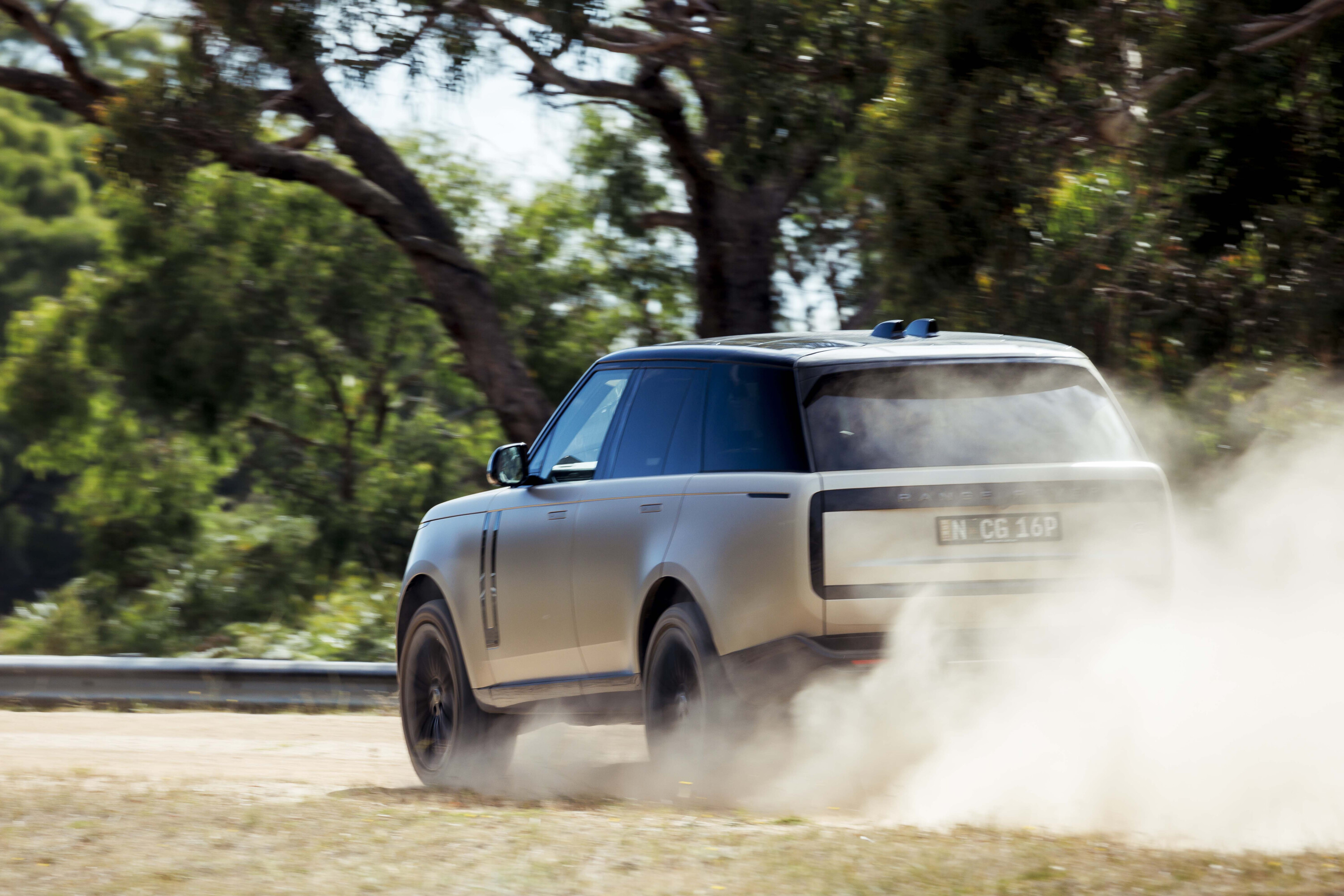
This is never a problem in the Range Rover which U-turns on a dime for a vehicle its size, thanks to rear wheels which can point in opposite directions from the front up to (a very aggressive) 7.3 degrees. If you glance in the side mirrors you can see them tilting in and out which is very cool.
We’d describe the powertrain as smooth as butter – we never felt a single gear change, not once. There’s plenty of performance from that twin-turbo V8, too, more than enough to startle passengers who’ve never been in anything ‘fast’.
Sinking the accelerator into the deep carpet, the Range Rover almost pauses to take a deep breath before it selects a lower gear and unleashes a classic, if slightly muted, V8 roar. Pleasingly, it’s a natural-sounding engine note and if there’s any fakery involved, it’s completely tricked this road-tester who has a keen ear (and distaste) for artificial engine noises. If it’s a V8 noise you crave, you’ll be satisfied.
Range Rover claims 4.6 seconds 0-100km/h but our own testing yielded a best of 5.4 seconds. It squats so hard that the headlights must come close to dazzling oncoming drivers at night. It’s slightly unnerving as the speed builds so easily in such an enormous vehicle. Certainly, transitioning from maximum acceleration to maximum braking almost feels slow-motion-like as the Range Rover goes from heavy squat to heavy dive.
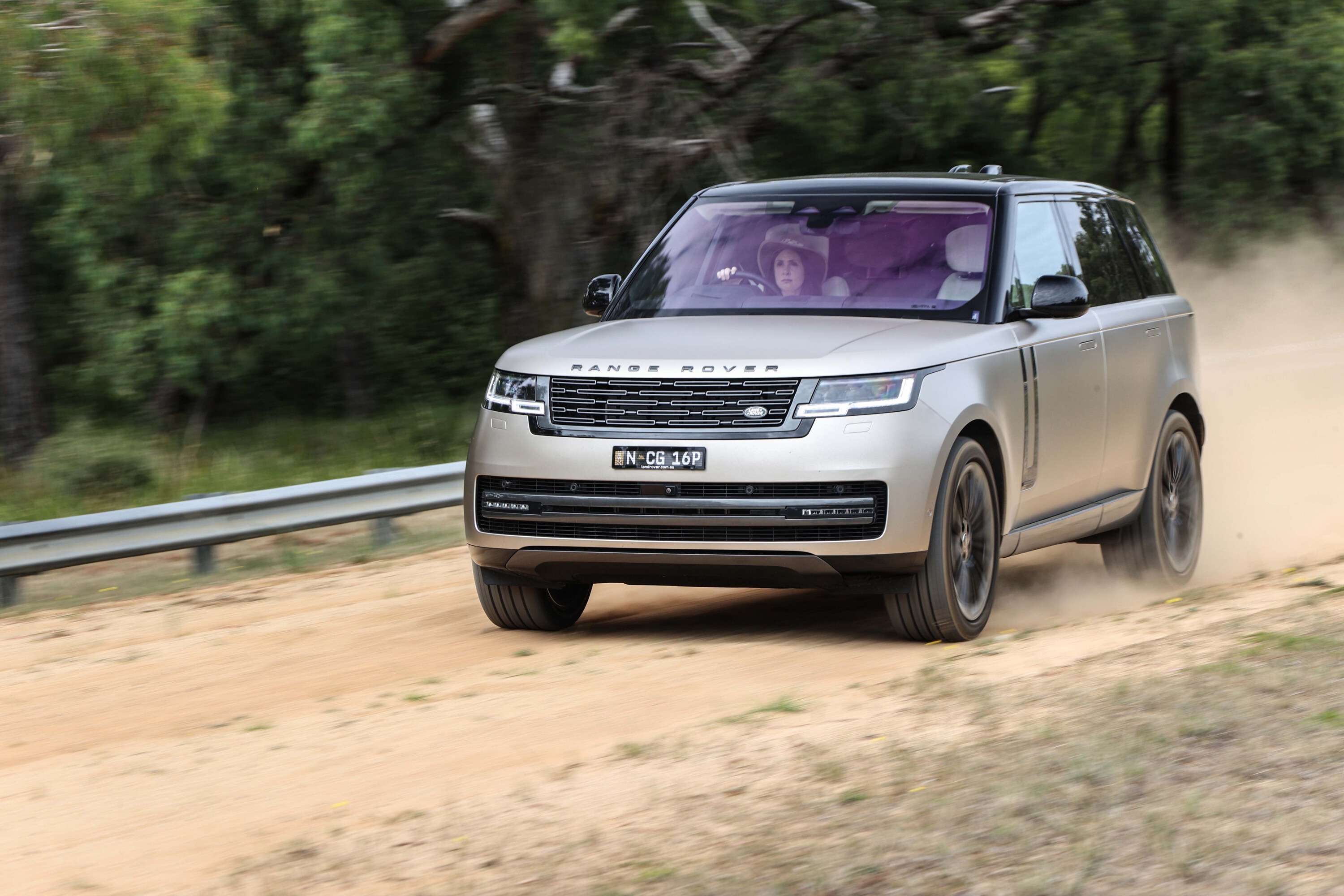
In the corners, despite the 48-volt active anti-roll bars, the Range Rover is a bit boat-like with plenty of squat, dive and body roll – even in its most sporty Dynamic mode. It’s a bit lazy, and not the most agile of vehicles, but that’s the price you pay for ride quality as good as this.
We were slightly disappointed by the amount of wind noise coming from around the A-pillar (presumably the side mirrors). Video side mirrors – eliminating the need for aerodynamically bulky physical units – could be a worthwhile addition to future Range Rovers.
Hardcore off-roading wasn’t a part of this test but Range Rover promises much. As well as the much-lauded Terrain Response 2 system offering five off-road software modes, at its maximum adjustable height the air suspension grants 295mm of ground clearance. There are also locking centre and rear diffs, and a 900mm wading depth.
We’d be very hesitant taking our test car off-road given the $17,000 optional paint finish and 23-inch wheels with 40-profile road tyres, but each to their own.
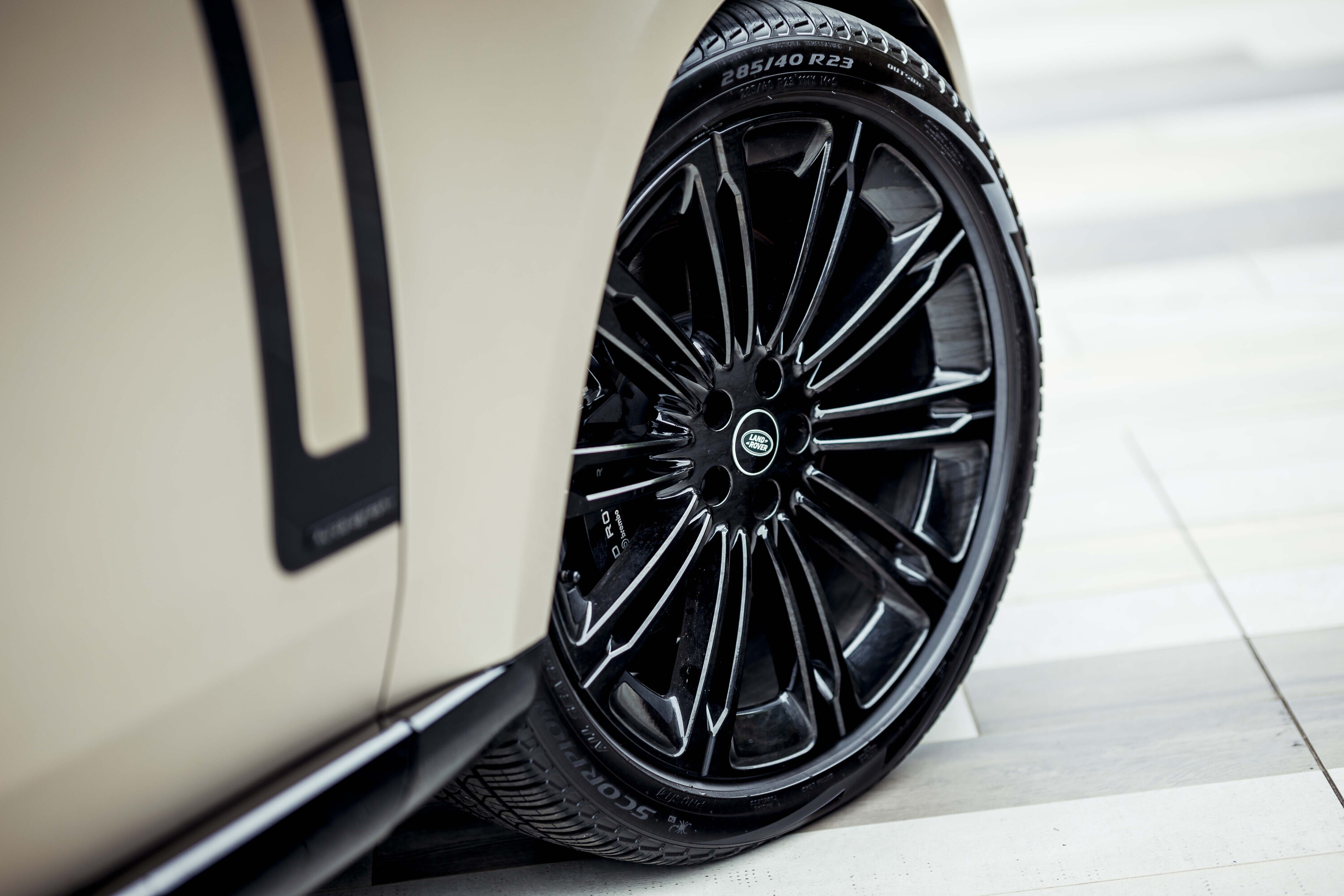
The Range Rover offers a full suite of semi-autonomous driving capabilities including radar cruise control with self-steering, all of which only added to the pleasure of highway driving – even if it chimes at you to return your hands to the steering wheel after a certain amount of time.
Driving on country roads at night is fun with the adaptive headlights which let you use the high beam even when following cars – or with cars oncoming. A computer scans the road ahead and quickly turns off individual LEDs within the headlights, putting a car ahead in a little ‘box’ of shade surrounded by high-beam.
This avoids dazzling other road users and is extremely cool tech (if not unique to Range Rover). That all said, the high beams could be a bit brighter if you live in the country.
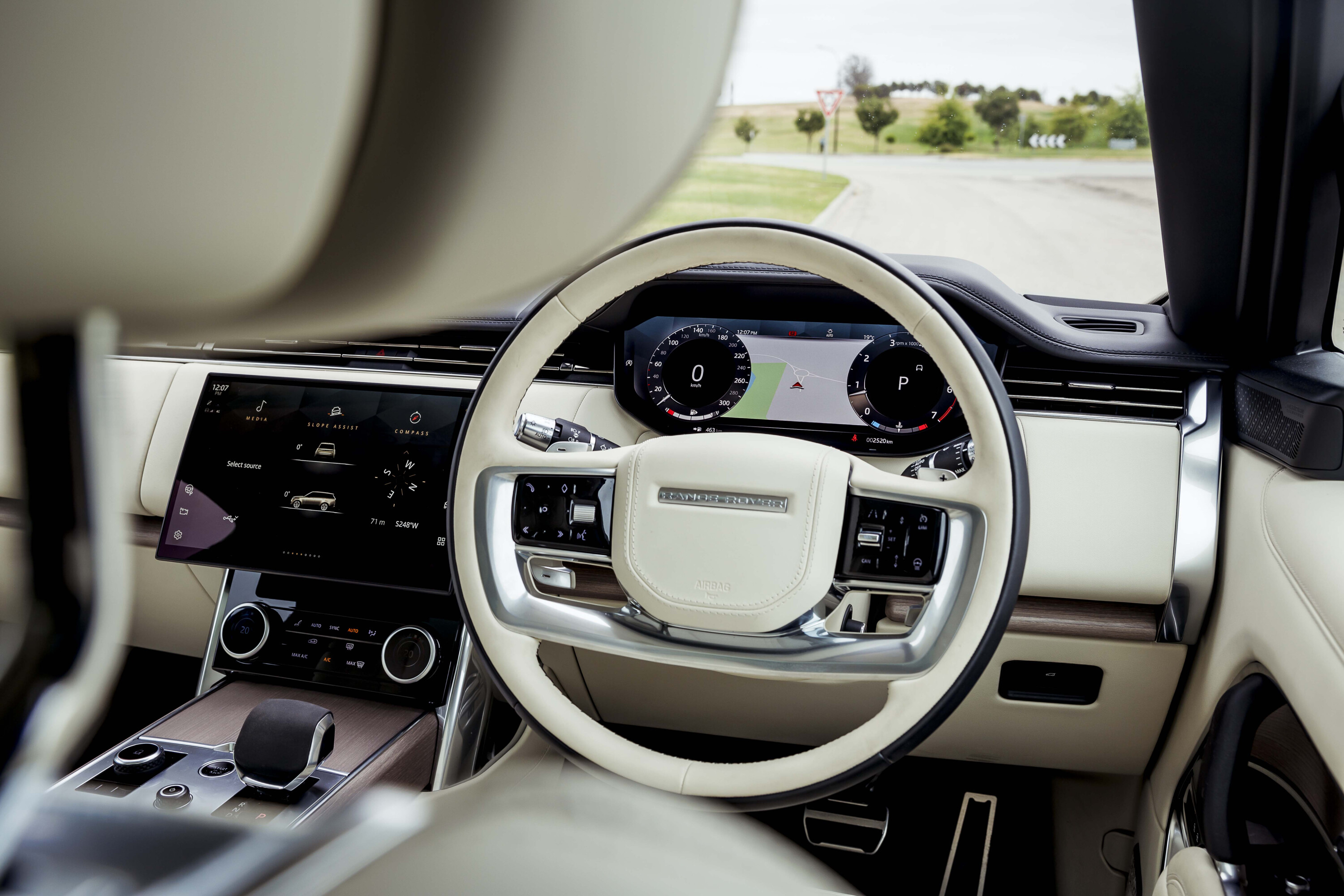
How is it on fuel?
Fairly poor. Range Rover reckons 11.8L/100km on the combined cycle is possible. During 2300km of testing, we recorded 13.5L/100km. The Range Rover has a 90-litre fuel tank.
How safe is it?
Very safe, although its hefty 2585kg kerb weight and all-season Pirelli Scorpion tyres affected its ability to avoid obstacles in emergency situations.
On unsealed roads, the Range Rover’s active safety systems such as electronic stability control were superb at preventing a slide and felt as advanced as any system on any modern car.

However, the Range Rover performed below average in bitumen emergency braking and lane-change manoeuvres as part of our safety testing. Through a lane-change exercise, the Range Rover could only achieve 80km/h – about the same as a new Ford Everest on all-terrain tyres, so not particularly great. The ESC felt flustered and unable to contain such a heavy, high, pitching vehicle. Braking from 100km/h to a stop took 47.6 metres – around five to 10 metres longer than a normal car.
If you rarely take your Range Rover off-road, we recommend replacing the tyres with more road-focused versions such as Pirelli P-Zero.
For passive safety, the Range Rover scored a maximum five-star safety rating when crash-tested by the independent Australasian New Car Assessment Program (ANCAP) in 2022.
Warranty and running costs
The new Range Rover P530 isn’t what you’d call cheap to run, owing a lot to the V8’s fuel consumption. A plug-in hybrid would be more affordable everyday. Same, too, the electric version when it arrives next year.
All Land Rovers and Range Rovers come with a five-year, unlimited-kilometre warranty. The Range Rover P530 comes with a five-year, 130,000km servicing plan included in the price. Range Rover also throws in five years of roadside assistance for no additional charge.

Depreciation, as ever, is brutal for many luxury vehicles. Expect your new Range Rover to lose approximately a third to half of its value over five years.
VERDICT
Covering off absolutely everything about the Range Rover P530 Autobiography First Edition in this review is almost impossible. You’d need a book.
A very high price brings very high expectations, and the Range Rover met all but the highest of them. If you’re okay with a few little quirks and minor flaws, you’re unlikely to be disappointed. And it’s the kind of car you buy yourself as a gift. In P530 guise, the V8 is the meat between two pillowy brioche buns. You just can’t beat a V8 Range Rover. In many ways, this could be the ultimate car.
Many owners will be attracted because of the Range Rover badge, and it’s fair to say they might also be concerned about perceptions of driving a V8 Range Rover as the world struggles to contain its overall carbon emissions. Nobody needs to use three times as much fuel to get from A to B as someone else.
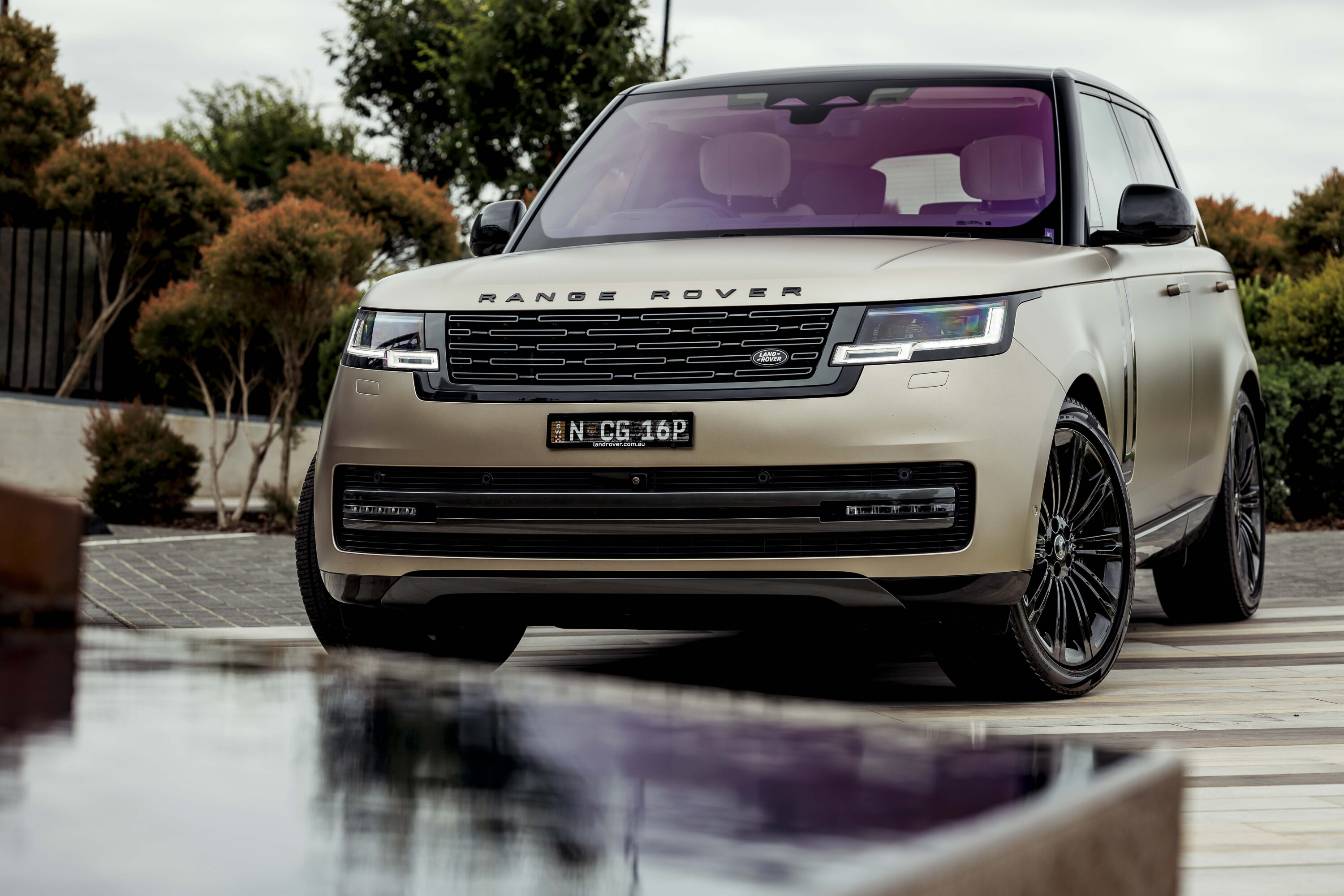
Buy the plug-in hybrid, you might say, or wait for the electric model, but it’s a shame Range Rover hasn’t been able to offer a V8 as even a mild hybrid, let alone a plug-in hybrid – like the Porsche Panamera Turbo S E-Hybrid. It would have extended the life of what is a classic formula. Instead, this could be your last chance to own a V8-powered Range Rover, so you had better get in quick.
Unlike a German car which is a perfect facsimile of another one, a Range Rover feels a bit unique. It’s as if, at the factory, they implant a soul at the end of the production line – something German car-makers haven’t yet quite been able to figure out.
Yes, you could get something like a BMW X7 for much less – but you might never be able to shake the sense that you’re somehow missing out. And that about says it all.
| 2023 Range Rover P530 Autobiography First Edition specifications | |
|---|---|
| Engine | 4395cc twin-turbo V8 petrol |
| Drive | all-wheel |
| Power | 390kW @ 5500-6000rpm |
| Torque | 750Nm @ 1800-4600rpm |
| Transmission | 8-speed automatic |
| 0-100km/h | 5.4sec (4.6sec claimed) |
| Fue consumption | 13.5L/100km (11.8L/100km claimed) |
| Weight | 2585kg |
| Suspension | double wishbone front, multi-link rear, air suspension |
| L/W/H | 5052/2047/1870mm |
| Wheelbase | 2997mm |
| Boot space | (5/2 seats) 1050/2335L |
| Brakes | 400mm front, 370mm rear ventilated discs |
| Tyres | Pirelli Scorpion Zero 285/40 R23 |
| Wheels | 23-inch alloy (full-size spare) |
| Price | $321,875 ($332,525 as tested) + on-road costs |
Score breakdown
Things we like
- As luxurious as cars get
- Sublime ride quality
- Amazingly tight turning circle
- V8 engine note
Not so much
- Fuel consumption
- Rear-seat space nothing special
- No hybridisation at all




